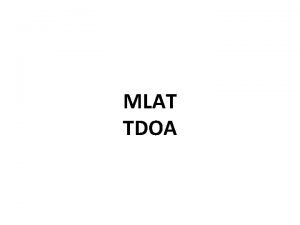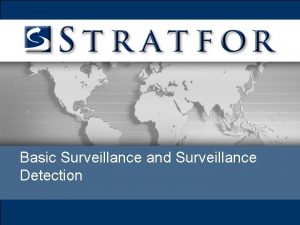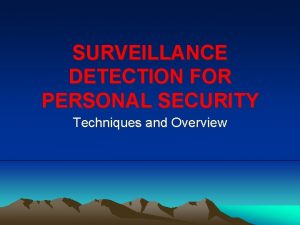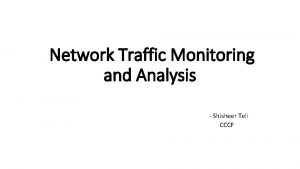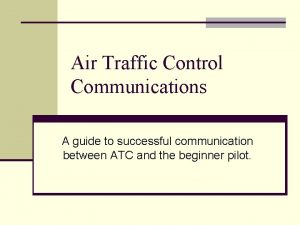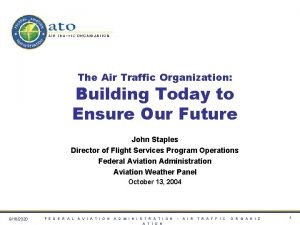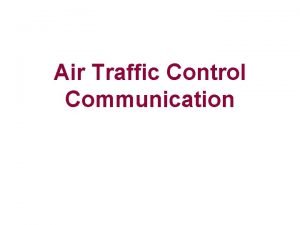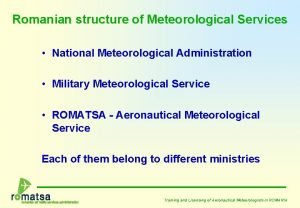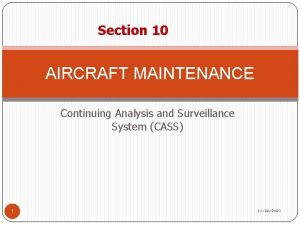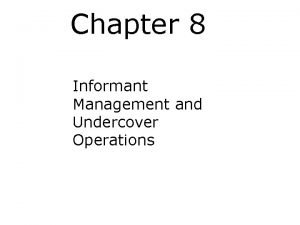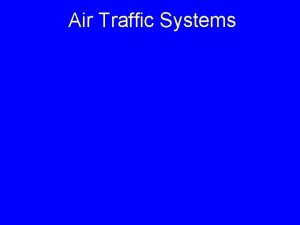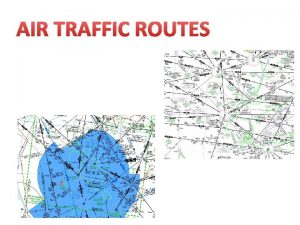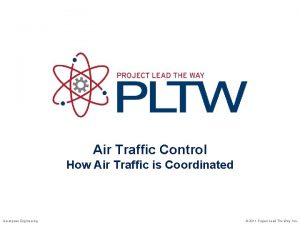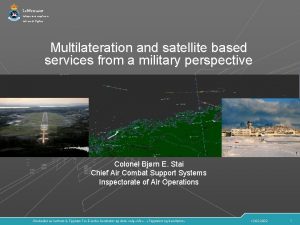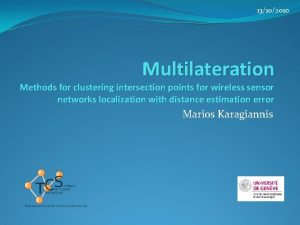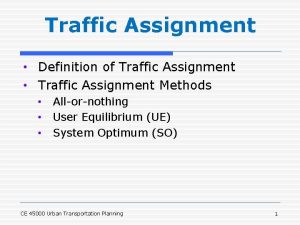Content Air Traffic Surveillance Techniques and Technologies Multilateration




















- Slides: 20


Content Air Traffic Surveillance – Techniques and Technologies Multilateration System Description Multilateration in an ECAC Context Conclusion 2

”In The Beginning” atc 6. AV 3

Air Traffic Surveillance – Techniques and Technologies 4

Air Traffic Surveillance – Techniques and Technologies Principle of Multilateration 5

Air Traffic Surveillance – Techniques and Technologies • Surveillance strategy: - mutually interoperable and compatible technologies MSSR/SSR Mode S ADS-B Multilateration, WAM 6

MLT System Description • Principle of Multilateration multilat_princip. avi 7

MLT System Description • Principle of Multilateration Co-operative Independent Surveillance - a number of antennas receive a signal from an aircraft - central processing unit calculates the aircraft’s position from the time difference of arrival (TDOA) of the signal at the different receivers - the TDOA between two antennas corresponds with a hyperboloid, a 2 D surface in a 3 D space - at least four antennas are required for a 3 D position calculation - if altitude is known already, three antennas are sufficient 8

MLT System Description • Active and Passive WAM Systems No transmitter means: - No transmitter license - No 1030 spectrum usage - No increase to 1030/1090 SSR environment (FRUIT) Aircraft detection requires: - The aircraft is Mode S equipped or - The aircraft is within existing MSSR coverage 9

MLT System Description • Active and Passive WAM System Active WAM Systems Independent of existing infrastructure - Improved detection of Mode A/C only aircraft Simpler and cheaper than MSSR interrogator - Fixed antenna - Low power interrogation option Suitable for Mode S Surveillance Care must be taken not to generate excess 1030/1090 MHz FRUIT 10

MLT System Description • WAM performance Multilateration and Wide Area Multilateration - Independent cooperative surveillance Surface Multilateration - Tracks aircraft on the surface - Uses 2 D algorithms Wide Area Multilateration - Tracks aircraft in flight - Uses 3 D algorithms 11

MLT System Description • WAM performance (en route application) MSSR WAM A 5 receiver WAM system with a 60 nm baseline gives: - Higher accuracy than MSSR - Reduced range due to horizon effect 12

MLT System Description • WAM performance (en route application) A 9 receiver WAM system with a 60 nm baseline gives: - Higher accuracy than MSSR - Similar range to MSSR Horizon effect (WAM horizon is the horizon of multiple sites) 13

MLT System Description • WAM performance (TMA application) Coverage at 3000 ft : - Larger baselines give better accuracy Shorter baselines give better low level coverage 14

MLT System Description • Impact on existing ATM operations There is no negative impact on existing ATM operations - WAM systems can easily be integrated into current ATM architectures - WAM systems can exceed the performance of existing surveillance sensors - There need be no difference in the information presented to the controller WAM systems could provide benefits to ATM operations in the future - WAM systems are capable of higher accuracies than current sensors - WAM systems are capable of higher update rates than current sensors - WAM systems can measure geometric height in addition to receiving pressure altitude 15

Multilateration in an ECAC Context • Eurocontrol is promoting WAM technology for ATC surveillance: (relatively low cost and good performance) Ground based surveillance infrastructure for En-Route and TMA 16

Multilateration in an ECAC Context Surveillance Strategy at the Aerodrome ADS-B/WAM Combination - future surveillance scenario (!? ) 17

Conclusion WAM systems are potentially capable of significantly higher accuracies than an equivalent radar service: v a five receiver WAM system has a higher accuracy than MSSR (both an en-route and terminal ) v The range is lower due to the horizon of multiple receivers v A comparable range can be achieved by adding in additional receivers En-route WAM systems can also provide accurate height measurement information All current WAM systems are based on 1090 MHz technology because: v wide availability of the technology as part of the airborne infrastructure v The properties of these signals for use in a WAM system (aircraft identification and accurate TDOA measurements) Provide ADS-B data in addition to independent position Do not require additional avionics Ref. : The ATM Surveillance Strategy for ECAC, 2. 2, ed. date 07/04/2008. http: //www. eurocontrol. int/surveillance/gallery/content/public/documents/WAM_study_report_1_1. pdf 18


20
 Loran
Loran Surveillance detection routes
Surveillance detection routes Hostile surveillance techniques
Hostile surveillance techniques Surveillance detection route
Surveillance detection route Inbound traffic vs outbound traffic
Inbound traffic vs outbound traffic All traffic solutions traffic cloud
All traffic solutions traffic cloud Pt tanah air sentosa
Pt tanah air sentosa What is esp
What is esp Static content vs dynamic content
Static content vs dynamic content Network traffic management techniques
Network traffic management techniques Network traffic monitoring techniques
Network traffic monitoring techniques Air traffic controller work hours
Air traffic controller work hours Air traffic control alphabet
Air traffic control alphabet Air traffic organization
Air traffic organization Atc comms
Atc comms Romanian air traffic services administration
Romanian air traffic services administration Air liquide advanced technologies
Air liquide advanced technologies Fertilisers
Fertilisers Continuing analysis and surveillance system
Continuing analysis and surveillance system Prc-137 hf radio
Prc-137 hf radio Elements of undercover operation
Elements of undercover operation
